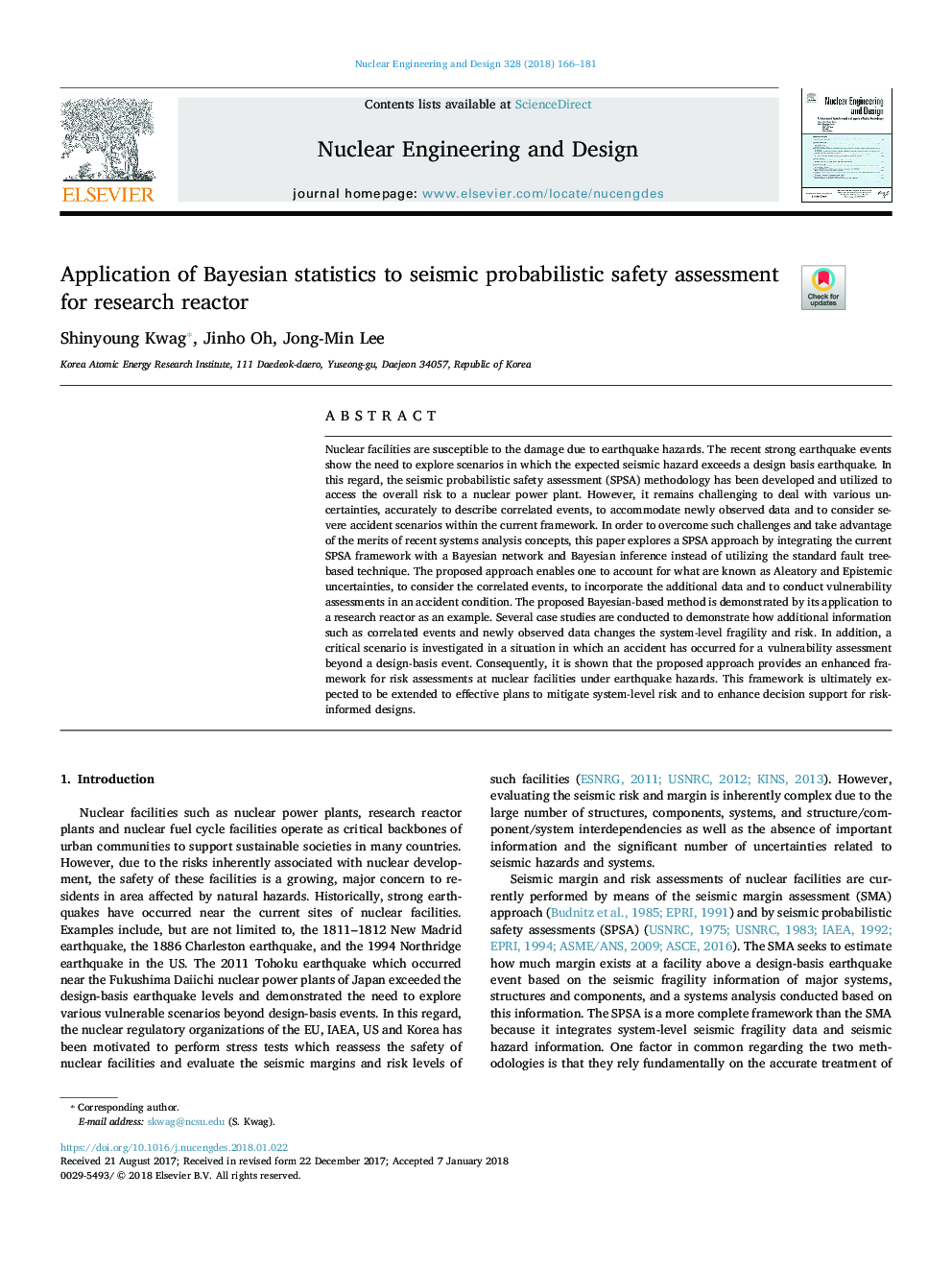| Article ID | Journal | Published Year | Pages | File Type |
|---|---|---|---|---|
| 6759361 | Nuclear Engineering and Design | 2018 | 16 Pages |
Abstract
Nuclear facilities are susceptible to the damage due to earthquake hazards. The recent strong earthquake events show the need to explore scenarios in which the expected seismic hazard exceeds a design basis earthquake. In this regard, the seismic probabilistic safety assessment (SPSA) methodology has been developed and utilized to access the overall risk to a nuclear power plant. However, it remains challenging to deal with various uncertainties, accurately to describe correlated events, to accommodate newly observed data and to consider severe accident scenarios within the current framework. In order to overcome such challenges and take advantage of the merits of recent systems analysis concepts, this paper explores a SPSA approach by integrating the current SPSA framework with a Bayesian network and Bayesian inference instead of utilizing the standard fault tree-based technique. The proposed approach enables one to account for what are known as Aleatory and Epistemic uncertainties, to consider the correlated events, to incorporate the additional data and to conduct vulnerability assessments in an accident condition. The proposed Bayesian-based method is demonstrated by its application to a research reactor as an example. Several case studies are conducted to demonstrate how additional information such as correlated events and newly observed data changes the system-level fragility and risk. In addition, a critical scenario is investigated in a situation in which an accident has occurred for a vulnerability assessment beyond a design-basis event. Consequently, it is shown that the proposed approach provides an enhanced framework for risk assessments at nuclear facilities under earthquake hazards. This framework is ultimately expected to be extended to effective plans to mitigate system-level risk and to enhance decision support for risk-informed designs.
Related Topics
Physical Sciences and Engineering
Energy
Energy Engineering and Power Technology
Authors
Shinyoung Kwag, Jinho Oh, Jong-Min Lee,
